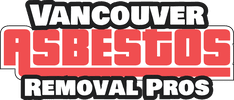Mold is the non-scientific name of many undesirable, annoying patches of different colored (black, yellow and, green) fungal growth. There are many species found in both indoor or outdoor environments. When we hear or read the word mold or fungus, we unintentionally anticipate its disadvantages but it also has many benefits. As it is used to make penicillin (medicine) and blue cheese. Yeasts are the type of mold, it is used to make bread, beer, wine, and also some mushrooms are edible.
-
How Do They Grow?
Mold grows by reproducing the spores. Air assists them to spread from one place to another by fastening themselves to clothes, shoes, and bags to move inside your commercial building. Active mold growth requires moisture. It means it spreads on wet areas such as around pipes and leakages. It can spread on either visible surfaces or hiding behind drywalls. When spores fall on those areas where there is exorbitant moisture they grow. Most of the building materials come up with suitable nutrients that enhance the growth of mold spores.
-
How to Indicate Mold Spores
Here are some physical symptoms that indicate that you are surrounded by mold
- Continuously face complaints of skin infection.
- Respiratory issues.
- Dizziness, nausea, and fatigue.
- Eye and nose infections.
- Sense a moldy odor.
Once you indicated that you are surrounded by mold spores, you must address this issue as soon as possible to mold removal authorities.
-
Impact of Mold on Health
Laying open to the moldy environment may lead to many health issues or none at all. It all depends on the sensitivity of people’s immune systems. Disclosure of sensitive people to moldy environments may lead to problems like stuffy nose, wheezing, red or itchy eyes, or skin. People with mold allergies or asthma problems face severe issues. It can also cause upper respiratory tract symptoms, cough, wheeze, and fever in people.
People with mold allergy, underlying lung disease, immune suppression and, chronic respiratory diseases are at risk while exposed to a moldy environment.
-
How To Keep Mold Out
You can keep the mold out of your by just following few guidelines which are as follows
- Maintain the humidity level.
- Repairing pipelines, and the leaky areas of the buildings.
But if you have doubt that mold has attacked your building, then it is the best way to call a firm for remediation.
While the inspection team evaluates the affected areas, spot out the growth of spores, recognize any area where mold grows and build a strategy for remediation or removal of commercial mold. After inspection, the experts will start the remediation process by positioning at containment around the affected areas to stop the contamination by using the HEPA vacuum that apprehends the very small particles. They perform clearance tests to make certain that mold has been removed. Also has advanced technology that assists to remove moisture in hidden places.
